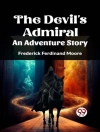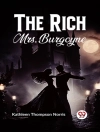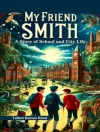In ’Bramble Brae, ’ Robert Bridges crafts a poignant exploration of nature and human emotion, drawing readers into a richly woven tapestry that reflects the interplay between the two. This lyrical poem, characterized by Bridges’ mastery of rhythmic and melodic language, presents an idyllic yet occasionally tumultuous landscape that serves as both setting and metaphor. The work embodies the late Victorian era’s literary context, where nature’s beauty was increasingly seen as a canvas for examining deeper philosophical questions, capturing the essence of pastoral poetry while also delving into the complexities of the human soul. Robert Bridges, an esteemed poet and the Poet Laureate of the United Kingdom from 1913 to 1930, was influenced by the poetic traditions of his time, particularly the Romantic and Pre-Raphaelite movements. His personal experiences with nature and loss deeply inform his work, as he sought to reconcile the beauty of the external world with the internal struggles of the human condition. Bridges’ affinity for nature can be traced back to his medical background, where he regarded the human experience as intertwined with the environment. Readers are invited to immerse themselves in the world of ’Bramble Brae’ where every line resonates with emotional authenticity and lyrical beauty. This work not only stands as a centerpiece of Bridges’ poetic oeuvre but also offers a meditative journey for anyone seeking solace in nature and the complexities of life. It is a must-read for enthusiasts of lyrical poetry and those who appreciate literature that mirrors the delicate balance of existence.
Om författaren
Robert Seymour Bridges OM (23 October 1844 – 21 April 1930) was an accomplished British poet, and poet laureate from 1913 until his death. Educated at Eton and Corpus Christi College, Oxford, Bridges later studied medicine in London before turning his focus entirely to literature. He developed a reputation for his technical mastery of prosody and for working within strict forms while also seeking fresh approaches to poetic expression. Bridges’ literary style is marked by a meticulous attention to structure and a dedication to the exploration of human experiences and emotions. His significant contributions to poetry include the development of the neo-Miltonic syllabics, a form that revived the syllabic verse of John Milton. Notably, ’Bramble Brae’ is a collection that encapsulates his talents, featuring varied pieces that highlight his love for nature and lyrical clarity. Bridges also edited the poems of Gerard Manley Hopkins, his close friend, and was instrumental in bringing Hopkins’ groundbreaking work to the public’s attention posthumously. In addition to his poetry, Bridges’ work in language studies is well recognized, notably in his tractate ’The Dialectical Destruction of the English Language’ (1908), where he advocates for spelling reform to better reflect pronunciation. His intellectual pursuits and literary output secured his place among the foremost poets of his time, influencing early 20th-century English poetry.












